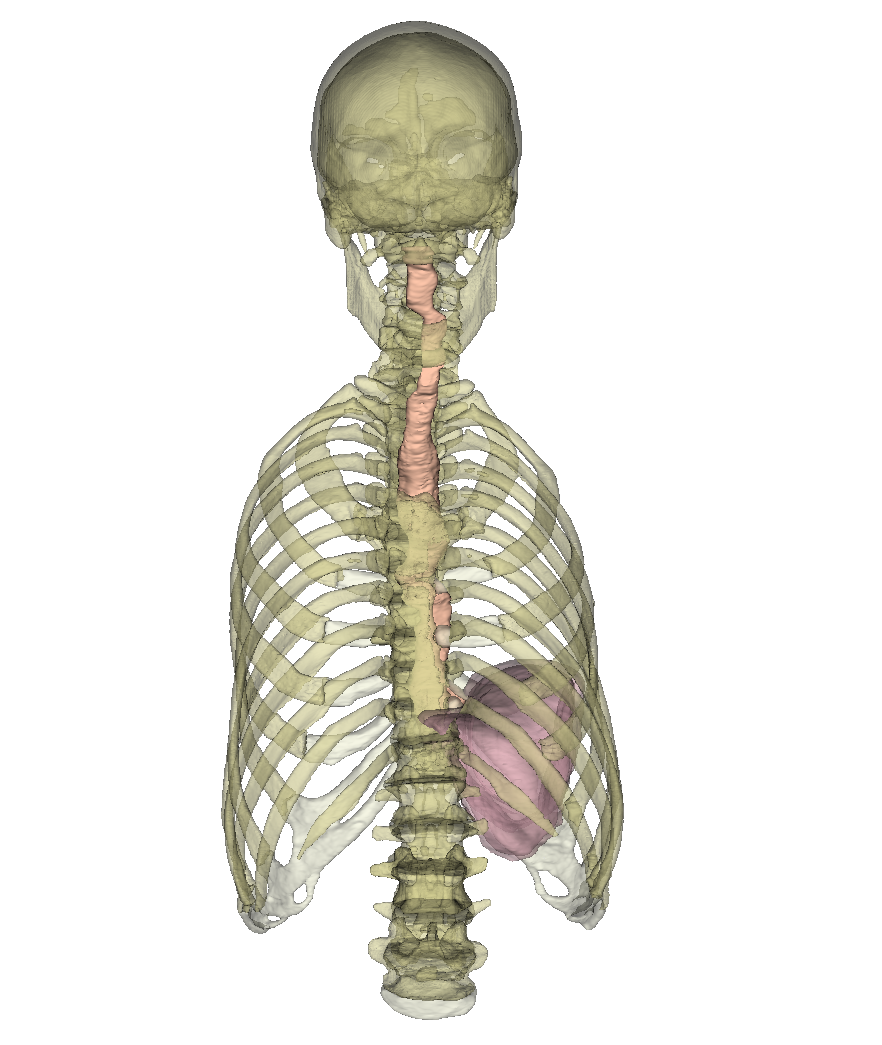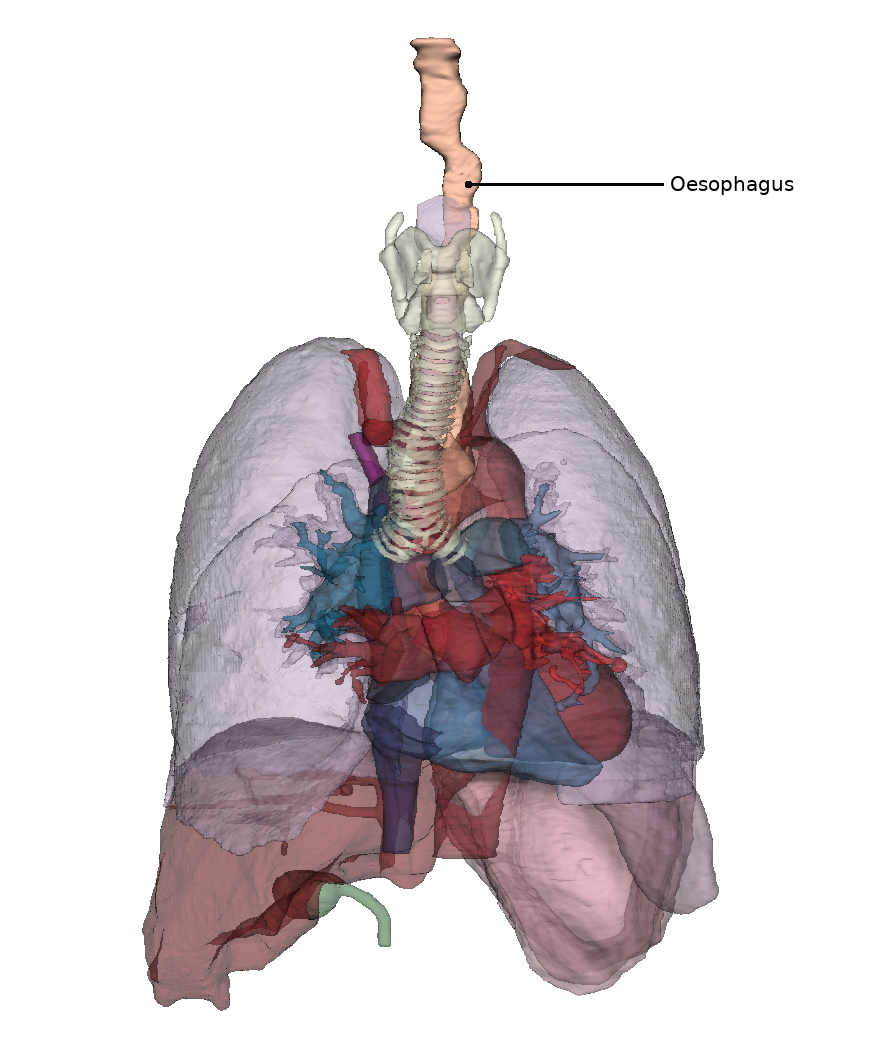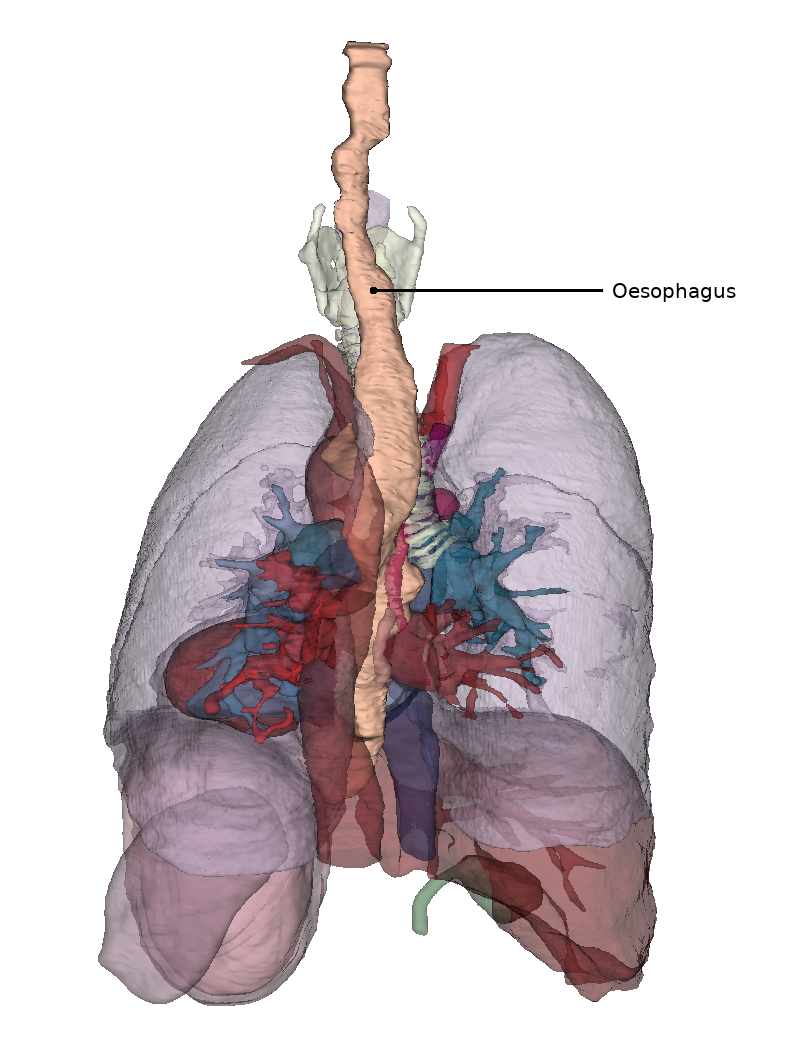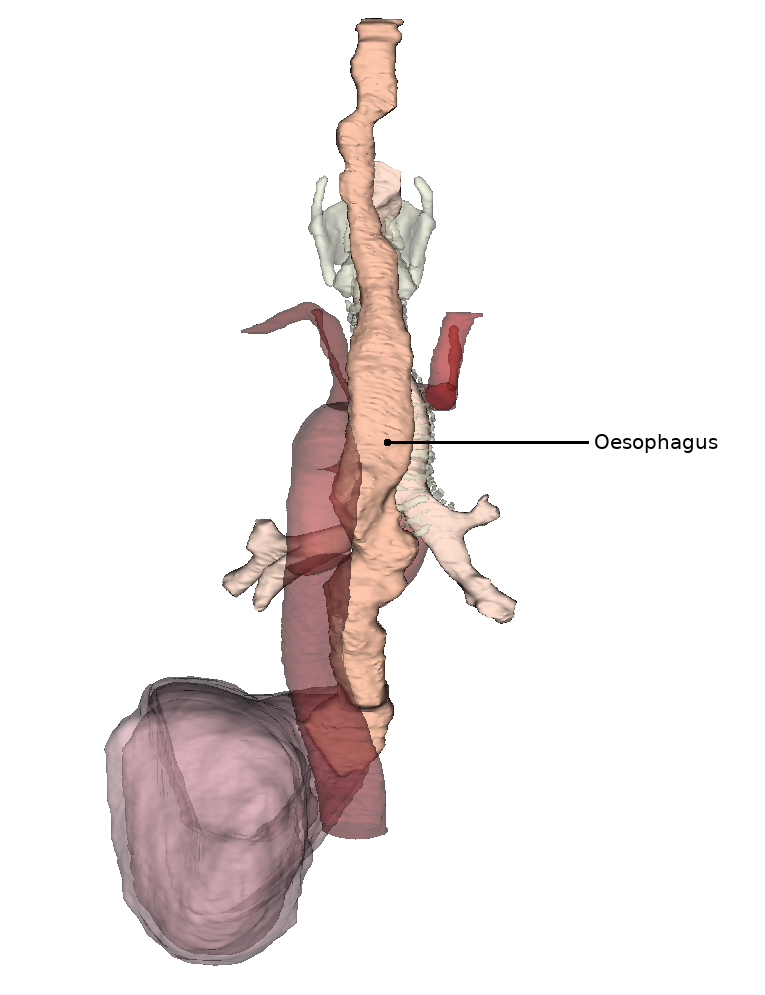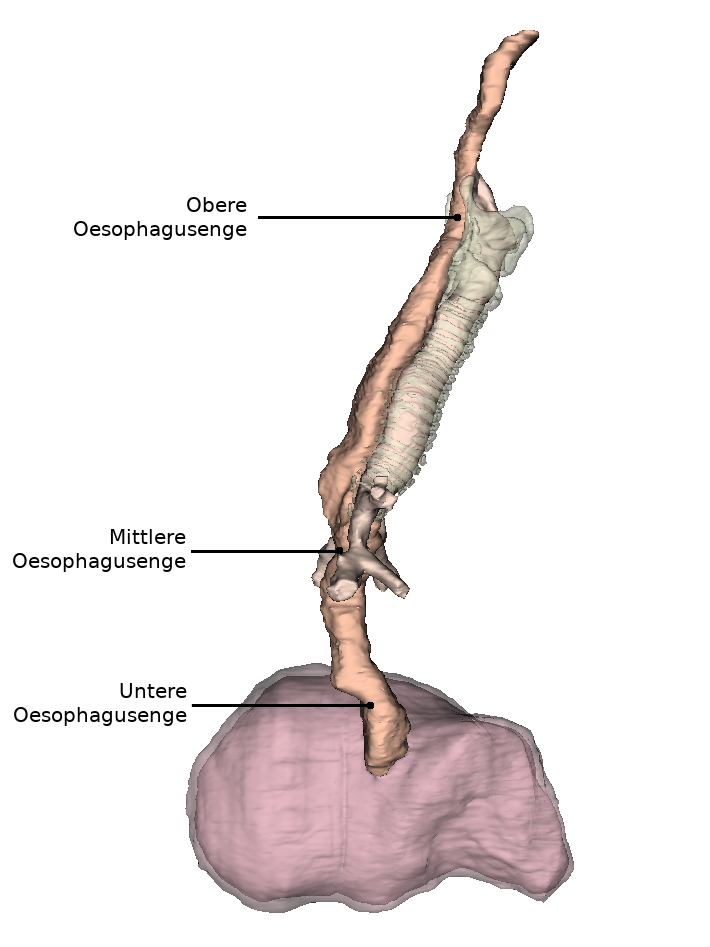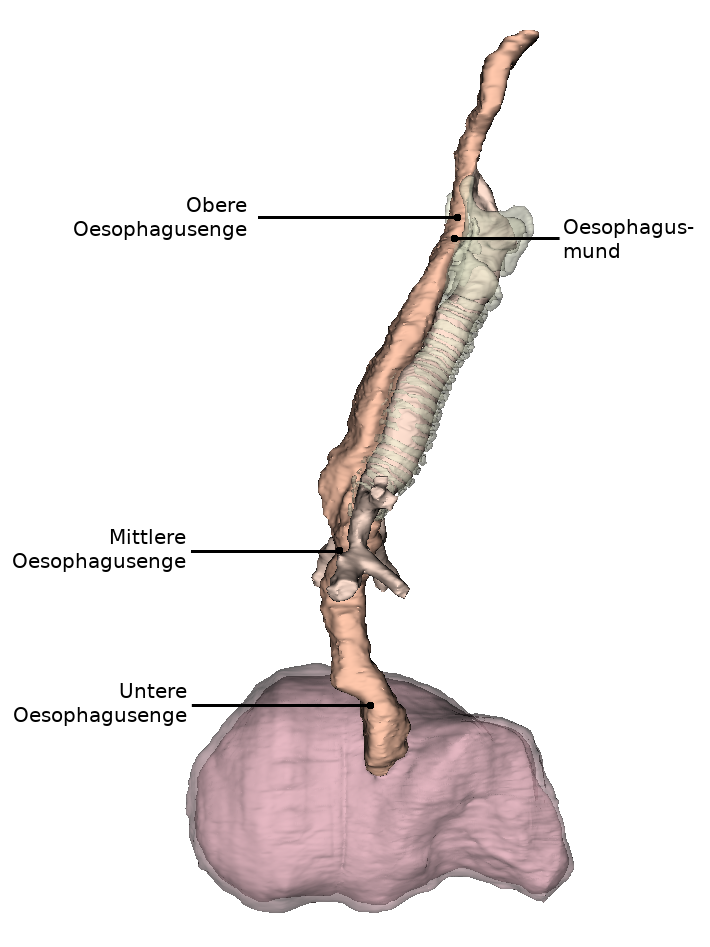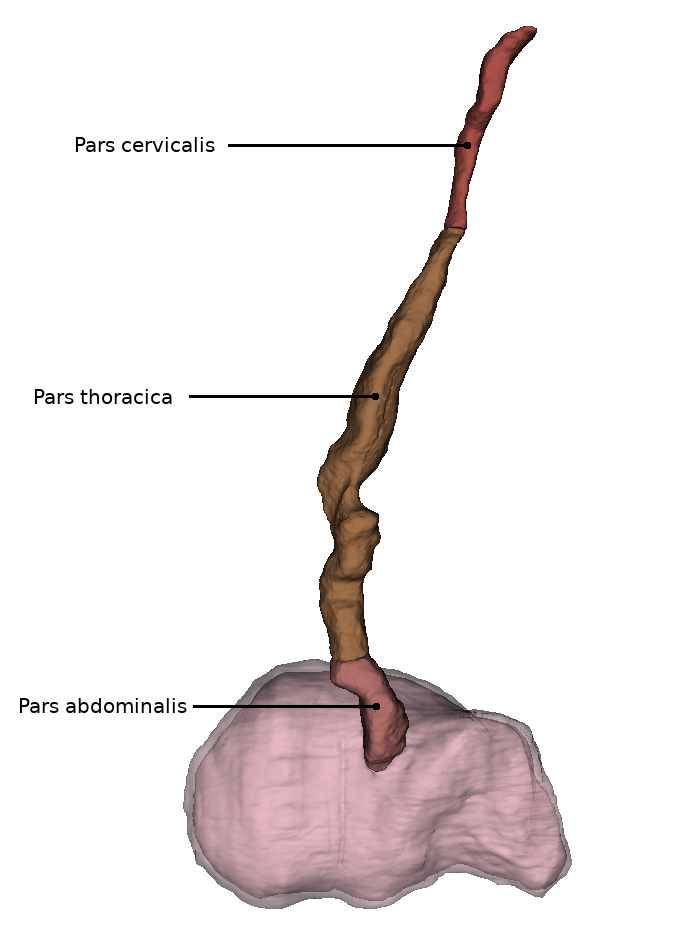Esophagus
The esophagus (Latin Oesophagus) is a muscular tube that, as part of the digestive system, carries swallowed food from the pharynx to the stomach by means of peristaltic movements.
Anatomy
Division
The human esophagus is approximately 23-27 centimeters long and has a diameter of 1-2 centimeters. It can be divided into three sections:
The pars cervicalis extends from HWK 6 to BWK 1 and lies anterior to the spine in the region of the neck.
The pars thoracica is the longest section and is located in the upper and posterior mediastinum (mediastinum superius and mediastinum posterius). It runs from BWK 1 to about BWK 11, where the passage through the diaphragm is located.
The shortest section is the pars abdominalis. This extends from the piercing of the diaphragm to the entrance of the stomach (lat. Cardia). In addition, it is already in the peritoneal cavity (lat. Cavitas peritonealis).
Projection onto the trunk
Due to its close relationship with neighboring organs, the esophagus has three narrowing points.
The esophageal orifice refers to the uppermost and narrowest part (constrictio pharyngooesophagealis). This is located in the pars cervicalis at the level of the cricoid cartilage of the larynx and measures approximately 14 millimeters in maximum diameter. Starting from the cricoid cartilage of the larynx, muscles surround the esophageal orifice and close it in the form of a sphincter, which is closed at rest.
The middle constriction (Constrictio partis thoracicae) in the pars thoracica is also called aortic stenosis. This is caused by the constriction of the esophagus by the left main bronchus and the aortic arch in the area of BWK 4/5. The maximum diameter here is 14 millimeters.
The inferior constriction (constrictio phrenica) results from the esophagus passing through the diaphragm at the beginning of the pars abdominalis and is called diaphragmatic constriction. Functional closure of the esophagus is ensured by the adjacent longitudinal tension of the musculature and by the veins of the esophageal wall. At rest (outside the act of swallowing), the lower part of the esophagus (pars abdominalis) is permanently closed.
Position in horizontal section
In the ventral view of the thorax, the esophagus lies predominantly in the lower part and is slightly displaced to the right with respect to the median line by the aorta running to its left. A little below the Proc. xiphoideus sterni it enters the peritoneal cavity through the diaphragm.
Relationship to neighbouring organs
Immediately on the anterior side of the esophagus runs the trachea until it divides into the two main bronchi (Latin bifurcatio tracheae). The anterior wall of the esophagus is connected to the posterior wall of the trachea by a multitude of connective tissue reins.
Below the structure of the tracheal bifurcation, in the lower mediastinum (Latin mediastinum inferius), the esophagus lies close to the left atrium and the thoracic aorta. Furthermore, the aorta initially runs caudally to the left of the esophagus and comes to rest behind the esophagus shortly before it enters the diaphragm.
Position In situ
The esophagus has characteristic curvatures in addition to strictures.
Die obere Krümmung verläuft in der Ansicht von ventral in der Pars cervicalis nach links. Die mittlere Krümmung liegt im Bereich der Pars thoracica und verläuft bedingt durch die nahe Aorta thoracica nach rechts. Die untere Krümmung in der Pars abdominalis wendet sich nun wieder nach links.
Betrachtet man die Speiseröhre in der Sagittalebene, so ist zu erkennen, dass diese dem Wirbelsäulenverlauf folgt und leicht konkav nach vorn gebogen ist.
Erkrankungen
